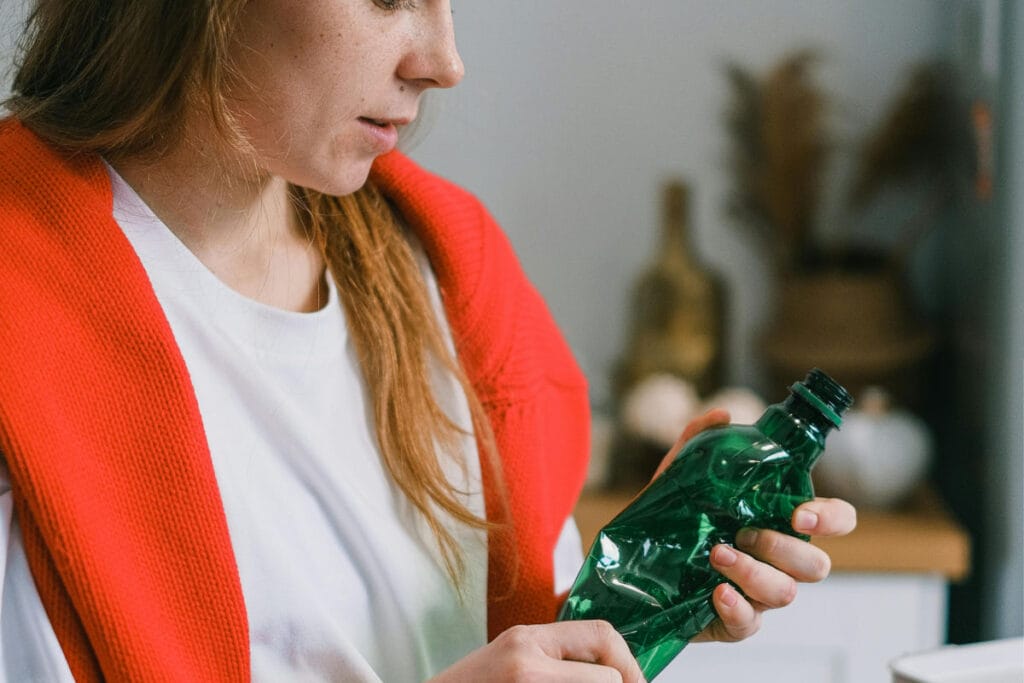
There are a host of confusing and misleading beliefs surrounding bottle recycling that are false. But with a bit of research and fact-finding, we can always find the truth behind these recycling myths, empowering us with the knowledge needed to maximize our positive impact on the environment.
Keep reading as we debunk six of the most common myths about the bottle recycling process.
Myth #1: All Plastics Can Be Recycled
One of the most common plastic recycling myths is that all kinds of plastics can be recycled. This is mostly true in principle – according to materials expert Sibele Cestari, who studies plastic waste. All polymers are technically recyclable – but depending on the type of plastic that is used to create the item, it’s often not feasible in practice. In other words, it’s not that certain types of plastic can’t be recycled, but that the process is too difficult and costly for recycling companies to want to do so.
There are several reasons for this. Oftentimes, those selling recycled plastic can’t find buyers or the proper recycling centers for certain types of difficult-to-recycle plastic. In other cases, the plastic in question is thermoset plastic (which makes up about 25 percent of all plastics and is used in items such as electrical insulation, pipes, etc.); meaning that it won’t melt when exposed to heat and therefore can’t be easily melted down and remolded.
While it’s usually easy to recycle plastic bottles, types of plastic that don’t often get recycled due to the difficulty of doing so include:
- Bioplastics
- Composite plastic
- Plastic-coated wrapping paper
- Polycarbonate
- Plastic wrap
- Blister packaging
The reason for the high difficulty and expense of recycling these kinds of plastics can vary. For instance, thin bags and plastic films can clog recycling-related machines if they aren’t separated from plastic bottle recycling.
Myth #2: Bottles Must Be Rinsed and Spotless
Another significant recycling myth is that the bottles that you send to be recycled must not only be rinsed, but also completely clean. In reality, however, there’s no need to make sure the bottles you’re recycling are absolutely spotless. More important is that they’re empty.
This has led to the related myth that if there’s one contaminant in a container of recycling, none of the other bottles will get recycled and it will all be a waste. The reality is that a recycling container must have all kinds of other non-recyclable waste in order to be excluded from recycling entirely. According to Ecocycle, other particularly problematic contaminants that “have been known to cause a load to be rejected” include ceramic mugs in the glass recycling, lithium-ion batteries, and other potential fire hazards.
But overall, the less contaminated recycling is, the more likely it is to be successfully recycled, so do your best to avoid leaving anything in the bottles before you throw them in the recycling bin.
Myth #3: Bottle Recycling Doesn’t Make a Difference
This is an increasingly common myth, but recycling bottles is definitely worth the small amount of extra effort it requires. U.S. states with container deposit laws (i.e., “bottle bills”) have beverage container recycling rates of about 60 percent. This makes an enormous difference in preventing millions of bottles from ending up in landfills or as litter, and it also reduces overall carbon emissions (we’ll dive into this in greater detail in our response to Myth #6).
Myth #4: Glass Bottles Are Always Recyclable
Like plastic, glass is technically 100 percent recyclable, but in practice, glass bottle recycling requires the proper preparation, transport, sorting, and facilities/infrastructure for doing so. For instance, because many cities have moved to a single-stream recycling system, glass is often mixed in with other kinds of recyclables, which can easily break and/or contaminate other recycling. Colored glass can be more difficult to recycle, as it may also need to be separated from clear glass and recyclers may end up discarding it to avoid such processing limitations.
Myth #5: Bottle Deposits Guarantee Recycling
Unfortunately, bottle deposits don’t guarantee that the bottles in question will actually be recycled. Deposits incentivize consumers to return bottles, but they only work if this incentive is sufficiently effective – and it may not be for everyone. The reality is that bottle deposits help with increasing recycling rates, but they don’t guarantee recycling.
Myth #6: Recycling Bottles Increases Greenhouse Gas Emissions
Recycling not only helps save energy and reduce greenhouse gas emissions in the long run, but it also saves money, water, and other valuable resources. For instance, recycling plastic and glass requires one-third less energy than producing those materials from new.
Since 1970, the U.S. has also recycled and composted more than 2.29 billion tons of materials, which has reduced total carbon emissions by more than 5.5 billion tons (equivalent to removing a billion cars from the road for a full year).
How to Begin Recycling Bottles with CLYNK
Now that you know how important bottle recycling is, it’s easy and takes minutes to sign up with CLYNK online. Once registered, you’ll receive free CLYNK cards, bag tags, and a voucher for 10 CLYNK bags to get you started.
Prefer to sign up in person? Visit a CLYNK kiosk near you to get your membership card, bag tags, and a free box of bags on the spot.
Explore our FAQs page for more details on how CLYNK works!